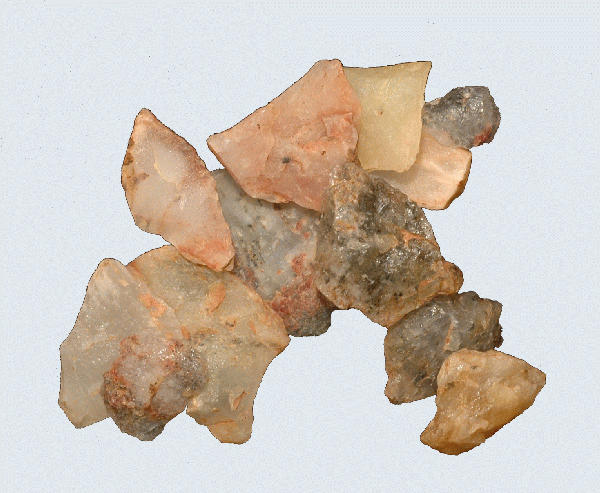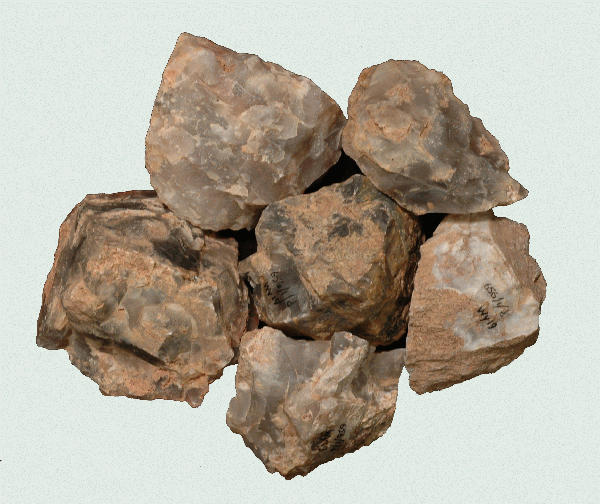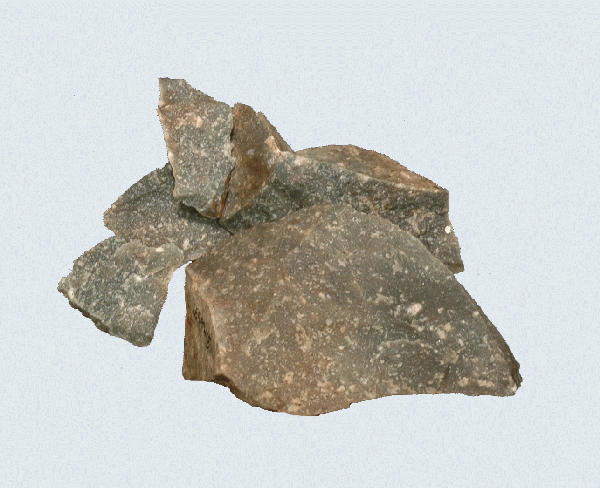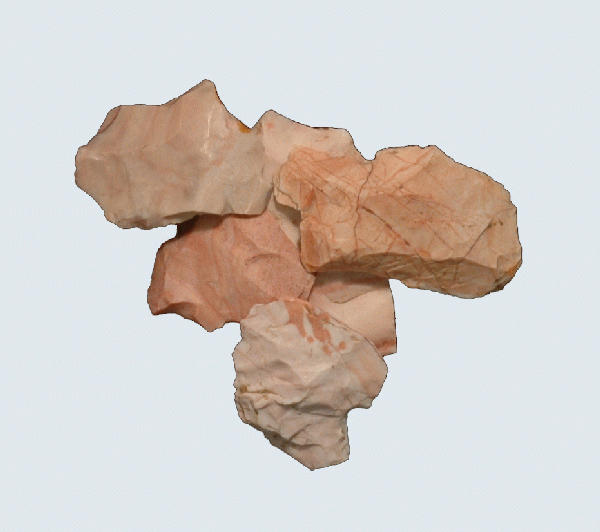
Chalcedony-Mylonite, 44GN0055, Greene County, Virginia.
Type Chalchedony
Collection Location:
Kinsey Run, southwest Madison County, Virginia
Description
Mylonite is compact, translucent chert-like rock with streaky or banded structure, produced by extreme granulation and shearing of rocks that were pulverized and rolled during ovethrusting. Color range from gray/green to white to yellow to rose to orange, depending on the lithology of the parent rock. Material occurs in thin layers. Dark specks are common in the translucent stone.
Distribution
It outcrops in small shear zones on the eastern lower elevations of the Blue Ridge and is associated with the overthrust faulting of the PreCambrian gneissic and granitoid units, especially the Pedlar Formation. Nash noted outcrops in Madison, Greene, and Rockbridge counties and she has seen cobbles from Roanoke County. Apparently small outcrops are common. Egloff noted numerous flakes and points in the Speiden Collection from Orange County and occasionally from collections in the Coastal Plain of Virginia.
Cultural Implications
While the streams of the upper Rappahannock River Basin carry mylonite cobbles, it is rare to find any indication of cobble reduction of this material at riverine sites. The outcrop areas (which may be quite small—20 by 20 feet) appear to have been the focus of quarrying and tool manufacture. In the Speiden Collection thin, small blocks of mylonite are found at a number of sites, indicating that people used the material obtained from the quarry and not from cobbles. Hinge fractures are common on artifacts.
References
Prepared By Nash 1999; Egloff 2008




